
Consider a handy flow chart and set of descriptions that will assist you in selecting the appropriate control chart, or at least understand the differences. [Read more…]
Your Reliability Engineering Professional Development Site
Prep notes for ASQ Certified Reliability Engineer exam ISSN 2165-8633
The CRE Preparation Notes series provides you with short practical tutorials on all the elements that make up the ASQ CRE body of knowledge. The articles provide introductory material, basics, how-tos, examples, and practical use guidance for the full range of reliability engineering concepts, terms, tools, and practices.
Keep your knowledge fresh by regularly reviewing topics and tools that make up reliability engineering.
Sign up for the CRE Preparation Notes email list for the new reliability engineering short tutorials.
- Improve your reliability engineering skills
- Learn about the wide range of tools available
- Enhance your resume with the ASQ CRE
You will find the most recent tutorials in reverse chronological order below.
by Fred Schenkelberg 12 Comments

Consider a handy flow chart and set of descriptions that will assist you in selecting the appropriate control chart, or at least understand the differences. [Read more…]
by Fred Schenkelberg 1 Comment

Statistical process control (SPC) is not a control chart alone.
SPC is a set of tools and a thought process to identify, measure, monitor and improve important elements of product development and production. I’ve seen very good and very bad implementations of SPC. [Read more…]
by Fred Schenkelberg 22 Comments

Before Norris-Landzberg’s study there was the work of Coffin and Mason.
One way to approach accelerated life testing is to use a model for the expected dominant failure mechanism. One such model is for solder joint low-cycle fatigue originally published by Coffin (1954) and Manson (1953), independently.
Norris and Landzberg proposed the plastic strain range is proportional to the thermal range of the cyclic loading (ΔT). They also modified the equation to account for effects of thermal cycling frequency (f) and the maximum temperature( T). They and other than empirically fit the parameters for the equation. [Read more…]
by Fred Schenkelberg 13 Comments
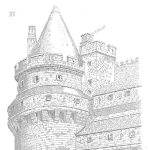
A form of testing that reduces the time till results are known, ALT provides a means to estimate the failure rate over time of a product without resorting to normal use conditions and the associated duration.
For example, solar photovoltaic cells should operate for 25 years without failure. The product development time is less than a year for a new panel and the team wants to estimate the reliability of the cells over the 25-year duration. [Read more…]
by Fred Schenkelberg 2 Comments
When this posts I should be home from Nepal and mostly recovered. So, back to more details going forward. Take a look, work the problem, solve it, then show your work. Comment with why you chose your response and why you didn’t select one of the others. [Read more…]
by Fred Schenkelberg 2 Comments
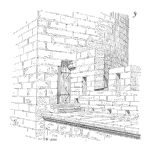
When this posts I should be just getting home from Nepal (jet lag is no place to write posts). So, this post and the next couple are homework for you. Take a look, work the problem, solve it, then show your work. Comment with why you chose your response and why you didn’t select one of the others.
From question 19 of ASQ CRE 2009 sample exam. [Read more…]
by Fred Schenkelberg 2 Comments

When this posts I should be near 17k ft altitude without electricity or internet – hoping for the best. So, this post and the next couple are homework for you. Take a look, work the problem, solve it, then show your work. Comment with why you choose your response and why you didn’t select one of the others.
Here is question 18 from the ASQ CRE 2009 sample exam. [Read more…]
by Fred Schenkelberg Leave a Comment

I’m about to leave for Nepal for a month and much of it without internet. So, this post and the next couple are homework for you. Take a look, work the problem, solve it, then show your work. Comment with why you chose your response and why you didn’t select one of the others.
This is question 17 from the ASQ CRE 2009 sample exam. [Read more…]
by Fred Schenkelberg 3 Comments
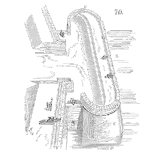
I’m about to leave on a long trip and much of it without internet. So, this post and the next couple are homework for you. Take a look, work the problem, solve it, then show your work. Comment with why you chose your response and why you didn’t select one of the others.
This is question 16 from the ASQ CRE 2009 sample exam. [Read more…]
by Fred Schenkelberg 5 Comments
Best Wishes for all those taking the CRE Exam Oct 4th.
by Fred Schenkelberg 3 Comments

Recently a question came to me about the difference between hazard rate and failure rate. A lot of literature and reference use these two terms interchangeably. I have long thought there is a difference, and to check my understanding I asked a good friend and reliability engineering consultant Chet Haibel. He provides a slide set (below) that described the various functions we use working reliability statistics and he details out the functions when using the exponential distribution.
by Fred Schenkelberg Leave a Comment

I received a note today from someone that has signed up for the Oct 5th CRE exam (about two weeks from today) and has not spent any time preparing. The request:
How should I prepare for the exam?
Reminds me of a quote about tree planting. The best time to plant a tree is 20 years ago, the second best time is now. [Read more…]
by Fred Schenkelberg Leave a Comment
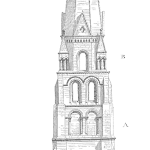
Test yourself with the third five questions from an ASQ sample exam. If you have other ways to sort out these questions, please comment and let us learn and compare approaches. [Read more…]
by Fred Schenkelberg Leave a Comment

If you have other ways to sort out these questions, please comment and let us learn and compare approaches. [Read more…]
by Fred Schenkelberg Leave a Comment
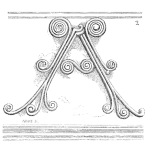
ASQ has posted sample exams for the past 10 or so years for the certifications. The CRE one is from 2009 and has questions used on previous exams. You can find a copy here or here.
This post has the first 5 questions with the answers explained. This is how I think or work through the problem to select an answer. Please comment if you have a different approach, especially if it would save time. [Read more…]